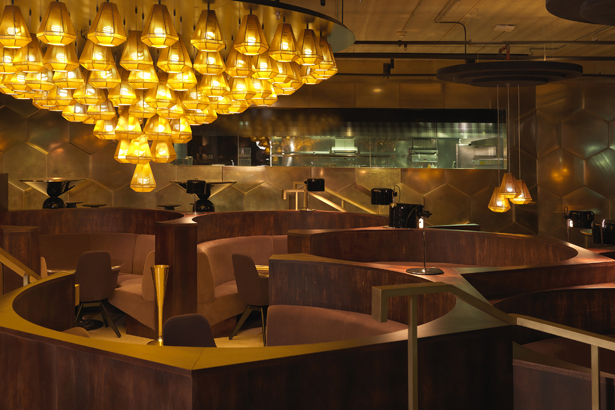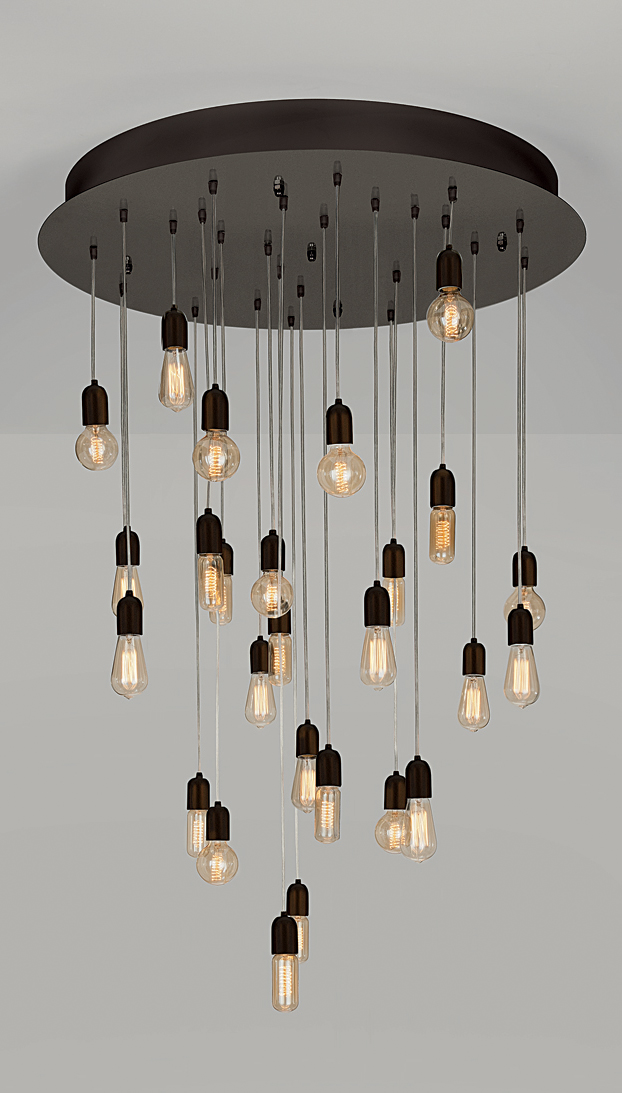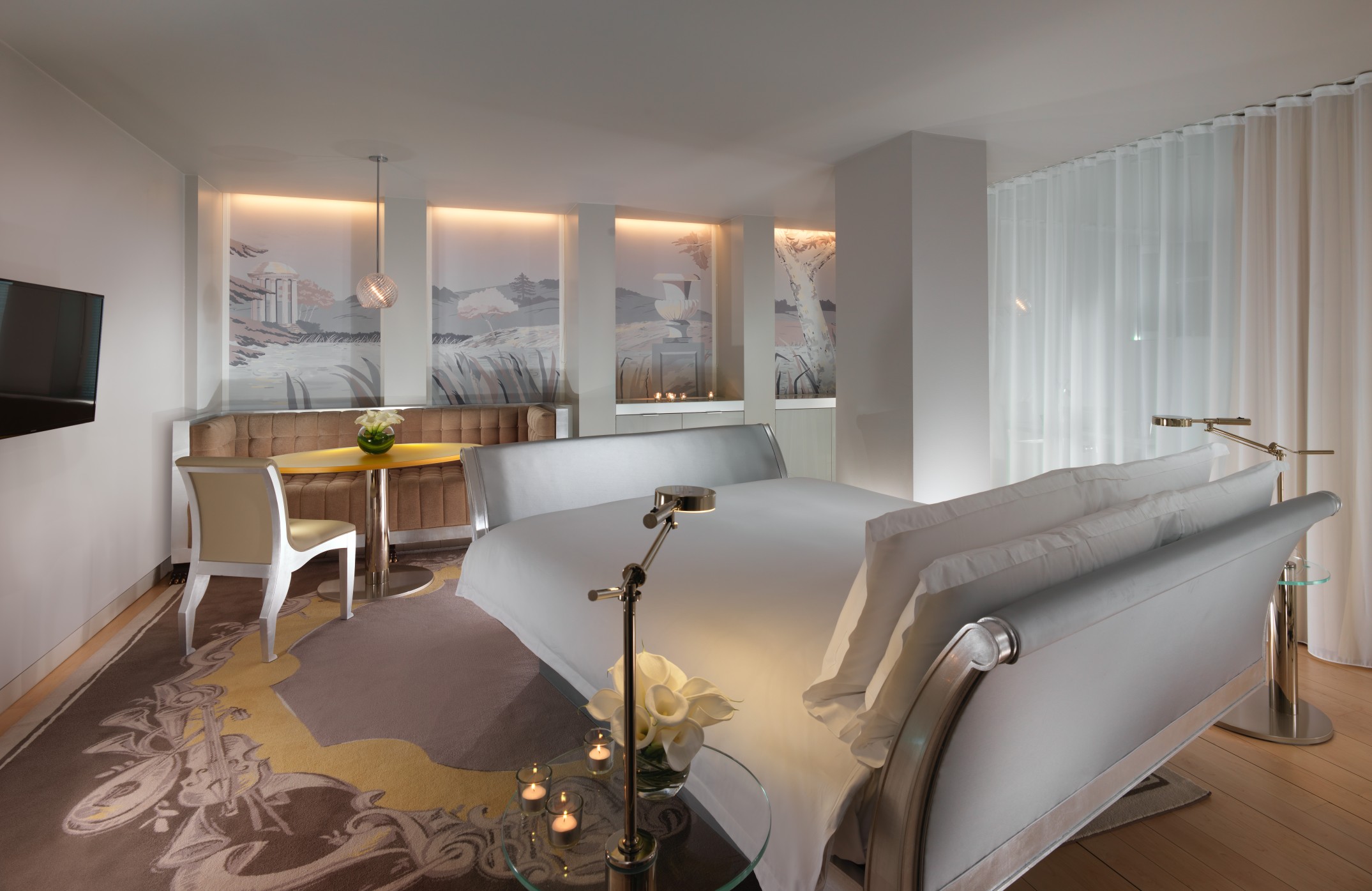Chelsom – Behind the design
considerations and inspirations influencing lighting product design
Sitting in front of a white sheet of paper waiting for the inspiration to design a light fitting might sound as scary as the author sitting there with his ‘writer’s block’. But given the unique role of lighting in hospitality interiors, given the enduring wish that lighting should add wow factor, given the ever faster rate of change in lighting technology and given the huge global market in which we operate, it’s often the case that designs just come tumbling out.
Interior designers are being challenged more than ever before to create increasingly unique and memorable interior spaces for which lighting plays a fundamental part. This thirst for individuality is something which is equally important for us when it comes to refining our new collections. We are constantly looking to evolve new concept directions and as such, we do start with that clean white sheet of paper, albeit the paper may be framed by the restrictions of budget, function and dimension. That is the design challenge and that is the fun!
In the commercial world, just as the interior designer must rein in his or her purely personal aesthetic preferences in favour of the client’s overall design brief, so we must blend product style with total suitability for contract use, the latest energy saving technology, value engineering to hit the project’s budget and above all the features which a discerning guest notices, likes and wants to come back to. For us, the guest experience is always the focus point at the end of the product design process. We have no way of knowing whether the guest will like blue or green, big or small, contemporary or traditional, but we do know they want lighting which blends ambience with ease of use to suit the increasingly multi-functional nature of the guestroom.
Just like all the other products which go to make up a successful hotel interior, lighting products come with their own set of design considerations. Where is the lighting going? What has it got to do? How much (or how little) does it need to say? How important is light output? How can it be unique and on trend? Can it be built with the quality levels required? What is the budget? The list goes on so it is vitally important that as product designers we thoroughly understand the lighting needs of our complex market and are flexible enough to adapt our ideas accordingly.
Whereas technological advancements are undoubtedly one of the significant forces that create an imperative for new products, it’s important to get the blend right between embracing that new technology without at the same time allowing it to dominate the whole aesthetic design process. The LED revolution has forced us to completely rethink lighting design and LEDs satisfy the sustainability impetus and the increasing client pressure to provide efficient lighting solutions. However, simply using LED for LED’s sake has led several product designers to fall into the trap of incorporating the new light source too early before developments have brought it to the stage where it becomes inconspicuous, gives good light output with the right colour temperature and ultimately becomes a cost-effective solution. Today we can offer an LED light source option for almost every product we manufacture.
 Perhaps the final piece of the jigsaw in successful lighting design for hotel interiors is knowing when to say ‘No’! We have always considered ourselves part of the whole team (interior designer, procurement, contractor, operator) which completes a successful lighting scheme in the hospitality market. Our part of that teamwork has to encompass being the expert in the product itself and to that end, if we are presented with a design concept which we think will simply not work for technical or functional reasons, we will always say ‘No’ to the idea. ‘No’ will be followed by our proposals with a solution or our suggestions as to how a better product should be created perhaps involving the latest lamp technology, switching options, dimming controls or simply increased stability and functionality.
Perhaps the final piece of the jigsaw in successful lighting design for hotel interiors is knowing when to say ‘No’! We have always considered ourselves part of the whole team (interior designer, procurement, contractor, operator) which completes a successful lighting scheme in the hospitality market. Our part of that teamwork has to encompass being the expert in the product itself and to that end, if we are presented with a design concept which we think will simply not work for technical or functional reasons, we will always say ‘No’ to the idea. ‘No’ will be followed by our proposals with a solution or our suggestions as to how a better product should be created perhaps involving the latest lamp technology, switching options, dimming controls or simply increased stability and functionality.
Whereas lighting sometimes needs to be inconspicuous and barely noticed by a hotel guest, great lighting products can sometimes be the focal point for an entire interior design scheme. Designing those great products is all about the bigger picture and about pulling together all those different threads which have equal importance and which help create a lighting product with wow, function, style and cost and above all will appeal to the hotel guest for many years to come.
All Images © Chelsom 2015







